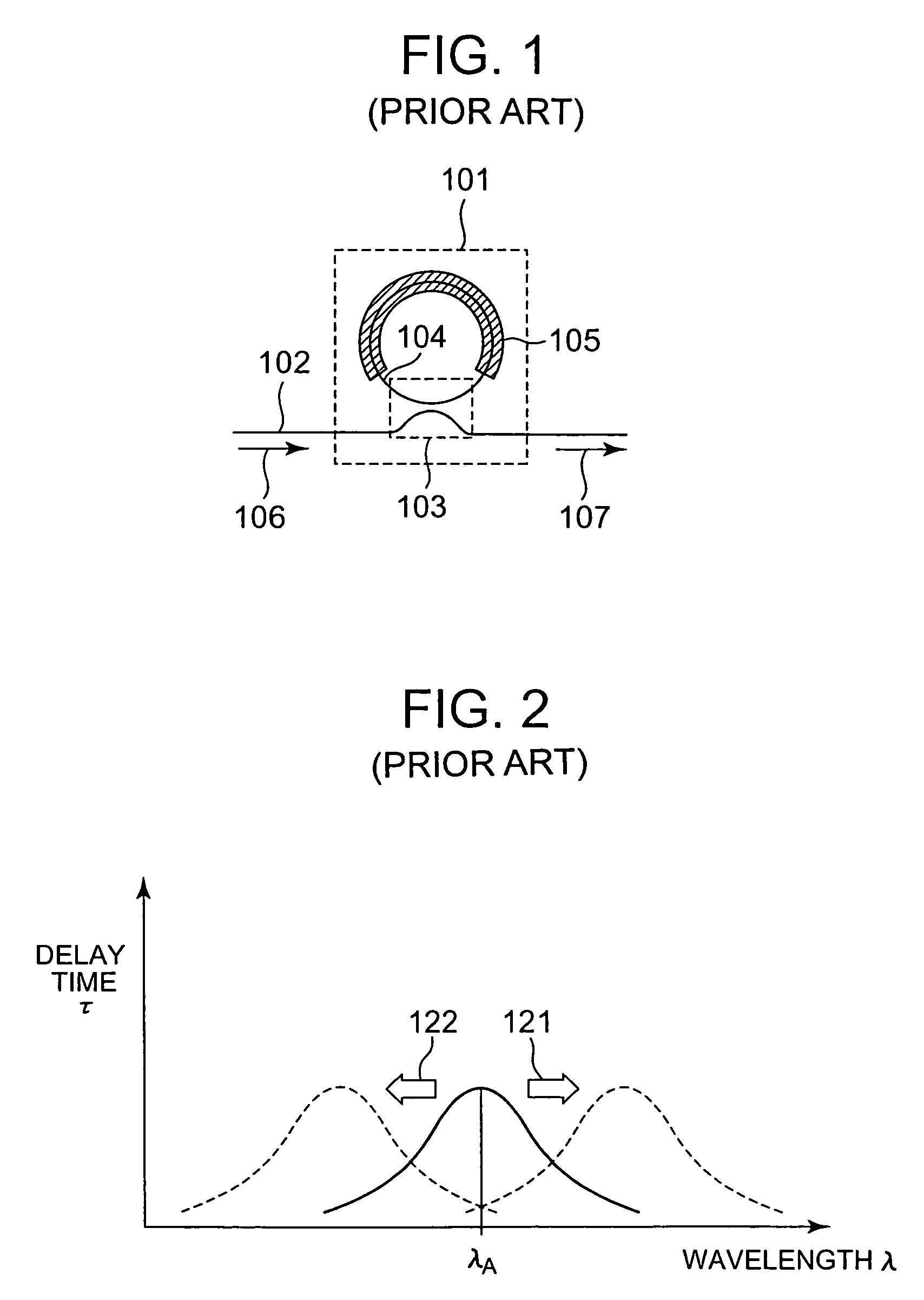Tunable dispersion compensator and method for tunable dispersion compensation
a compensation device and tunable dispersion technology, applied in the direction of instruments, optical elements, optical waveguide light guides, etc., can solve the problems of light waveform deterioration, increased size of equipment carrying out chromatic dispersion compensation, and expensive light amplifiers being required to compensate for transmission loss. , to achieve the effect of excellent dispersion compensation characteristi
- Summary
- Abstract
- Description
- Claims
- Application Information
AI Technical Summary
Benefits of technology
Problems solved by technology
Method used
Image
Examples
first embodiment
[0044]Then, the basic structure of a tunable dispersion compensator according to the present invention to solve the above described problems will be explained.
[0045]FIG. 6 shows a schematic structure of the tunable dispersion compensator according to the first embodiment of the present invention provided with four stages of ring resonators. This tunable dispersion compensator 201 connects a total of four stages of first to fourth ring resonators 2021 to 2024 in series along one common linear waveguide 203. The one linear waveguide 203 is provided with first to fifth mold filters 2041 to 2045 in such as way as to sandwich each of the ring resonators 2021 to 2024 from the input side and output side. These mold filters 2041 to 2045 are intended to remove noise components of higher modes which transmit through the linear waveguide 203.
[0046]The first ring resonator 2021 is provided with the linear waveguide 203 which transmits an optical signal 208 output from the first mode filter 2041...
second embodiment
[0059]Then, the basic structure of a tunable dispersion compensator according to the present invention will be explained.
[0060]FIG. 8 shows a schematic structure of the tunable dispersion compensator according to the second embodiment of the present invention. This tunable dispersion compensator 301 is constructed of first to fourth ring resonators 3021 to 3024 connected in series along a common linear waveguide 303. Here, a four-stage structure is shown as an example. The first ring resonator 3021 is constructed of a linear waveguide 303 which, transmits an optical signal, an optical coupler 3051 which distributes the optical signal and a ring-shaped waveguide 3061 which delays the distributed optical signal. The first ring-shaped waveguide 3061 is provided with a heater 3071 for heating and controlling. This heater 3071 is preferably disposed over almost the whole area of the first ring-shaped waveguide 3061 except the area making up the optical coupler 3051. This can make the tem...
PUM
 Login to View More
Login to View More Abstract
Description
Claims
Application Information
 Login to View More
Login to View More - R&D
- Intellectual Property
- Life Sciences
- Materials
- Tech Scout
- Unparalleled Data Quality
- Higher Quality Content
- 60% Fewer Hallucinations
Browse by: Latest US Patents, China's latest patents, Technical Efficacy Thesaurus, Application Domain, Technology Topic, Popular Technical Reports.
© 2025 PatSnap. All rights reserved.Legal|Privacy policy|Modern Slavery Act Transparency Statement|Sitemap|About US| Contact US: help@patsnap.com



